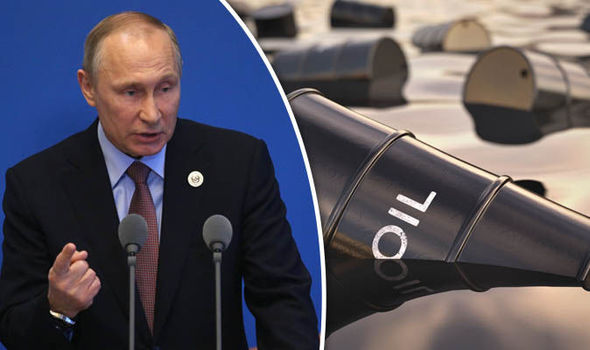(Akiit.com) “Number one, no more subsidies for fossil fuel industry. No more drilling on federal lands. No more drilling, including offshore. No ability for the oil industry to continue to drill, period, ends, number one.” (Candidate Joe Biden, Democratic Presidential debates, March 15, 2020.)
Well, whatever else we might say about Biden, we can’t say he fudged on that campaign pledge. One consequential calamity stares us in the face every time we pump gas.
One calamity Greenies often trumpet in support of Biden’s Green New Deal is the BP oil spill off the Louisiana coast in April, 2010. For those who only remember the hysterical headlines of the time, perhaps some follow-up clarifications are in order:
“There’s just no data to suggest this is an environmental disaster,” said marine scientist and former Louisiana State University professor Ivor van Heerden, who also worked as a BP spill-response contractor. “I have no interest in making BP look good – I think they lied about the size of the spill – but we’re not seeing catastrophic impacts. There’s a lot of hype, but no evidence to justify it.”
These observations came on the very heels of the spill—a mere three months afterward, making them all the more blasphemous at the time. Within one short year they’d been completely vindicated.

I grew up in southern Louisiana and spend most weekends along the Louisiana coast hooking, spearing, gaffing, blasting and otherwise assassinating the raw ingredients of family meals. So I had more than a casual concern with the BP oil spill.
The reasons this “disaster” fizzled out are many, and were apparent to non-hack scientists from the get-go.
“People don’t comprehend how so much oil could break down in such a short time period,” explained LuAnn White, a toxicologist with the Tulane University School of Public Health and Tropical Medicine who also served as director of the Center for Applied Environmental Health. “But we have natural oil seeps in the Gulf, and over 200 genera of microbes that break down oil already exist there.”
“It cannot be repeated often enough,” said Louisiana marine biologist Jerald Horst. Crude oil is a natural substance; it’s biodegradable. It’s a feast for microbes. And these consumed most of it from the BP spill.” The horrid black goo that leaked into the Gulf of Mexico from the BP spill was certainly toxic – but so are broccoli, beer and salt — it all depends on the dosage. In fact, that horrid black goo has spilled naturally into the Gulf for millenniums – at the rate of two Exxon Valdez spills annually.
A study by the Department of Oceanography at Texas A&M University found 600 “oil spills” into the Gulf, all ancient if not prehistoric, all antiseptically “natural” and all courtesy of earth goddess Gaia. In fact, these “spills” probably saved the survivors of Hernando De Soto’s plucky band of explorers, who record caulking their boats in 1542 with the abundant tar balls found along an eastern Texas beach. The study also reports that in 1909, a genuine gusher was spotted in the same area, shooting crude oil high into the air from the Gulf floor.
Not all these gushers lie below the Gulf, however. In fact, one of Mother Earth’s biggest “spills” is off Southern California’s coast at Coal Oil Point, not far from the homes of “environmental activists” Leonardo DiCaprio, Charlie Sheen, Barbra Streisand, Brad Pitt, Ed Begley Jr. and many, many others of their ilk. This spill gushes an estimated 3,000 gallons of crude oil daily into the waters off Malibu beach. Yet none of the above “activists” appears overly agitated over this “disaster.”
Nothing normally soothes the savage beast of an environmentalist like the notion of a substance being “biodegradable.” Indeed, the term “environmentally friendly” has become almost its synonym. Well, crude oil is about as biodegradable as substances come, especially when spewed into warm, microbe-filled waters like those in the Gulf of Mexico. Hence the stratospheric dunce caps crowning so many “environmentalist” heads a mere year after “the worst environmental disaster in U.S. history.”
“The damaging effects of the massive oil spill in the Gulf of Mexico will be felt all the way to Europe and the Arctic!” a “top scientist” told a congressional panel shortly after the spill, reported by CNN.
In fact, the damaging effects were hardly visible in Louisiana a few months later. Mr. van Heerden, who spent most of his days inspecting the Louisiana coast, found that less than 1 square mile of coastal marsh had been severely oiled, mostly around Timbalier Bay. That’s out of 5,300 square miles of Louisiana coastal marsh and swamp, by the way.
And by July, 2010 the “severely oiled” areas were already bouncing back. “Van Heerden’s assessment team showed me around Casse-tete Island in Timbalier Bay,” Time magazine’s Michael Grunwald wrote back then, “where new shoots of Spartina [marsh] grasses were sprouting in oiled marshes and new leaves were already growing on the first black mangroves I’ve ever seen that were actually black.”
“Ah,” you ask, “but what about that poisonous chemical used as a dispersant for the oil?”
You probably ingested traces of this poisonous chemical compound with last night’s dinner, and other traces probably coat your pots, pans, cups, spoons and forks right now. Some people call the dispersant Corexit 9500 – and some call it soap. Essentially, it’s Dawn dishwashing detergent.
“Dispersants are not very toxic,” explains Robert Dickey, director of the Food and Drug Administration’s Gulf Coast Seafood Laboratory. “They are detergents and solvents, and they become rapidly diluted. One square mile of seawater one foot deep is 200 million gallons. We added 1.8 million gallons in the whole Gulf.”
Point is: You add much higher concentration to your kitchen sink to make your dishes “safe” for your family.
After the spill, the FDA’s Gulf Coast Seafood Laboratory, the National Oceanic and Atmospheric Administration’s National Seafood Inspection Laboratory, the Louisiana Department of Wildlife and Fisheries, the Louisiana Department of Health and Hospitals and similar agencies from neighboring Gulf Coast states have methodically and repeatedly tested Gulf seafood for cancer-causing polycyclic aromatic hydrocarbons (PAH).
“Not a single sample [for oil or dispersant] has come anywhere close to levels of concern,” reported Olivia Watkins, executive media adviser for the Louisiana Department of Wildlife and Fisheries.
“All of the samples have been 100-fold or even 1,000-fold below all of these levels,” reports Mr. Dickey, the seafood laboratory director. “Nothing ever came close to these levels.”
An earlier study by Dr. Charles Wilson of LSU’s Department of Oceanography and Coastal Science put the scientific touche’ to something fishermen had known for decades: “The fish biomass around an offshore oil platform is ten times greater per unit area than for natural coral reefs.”
In brief, “villainous” Big Oil produces marine life at rates that puts to shame the Greenies’ “wondrous” Earth Goddess Gaia.
Columnist; Humberto Fontova
Official website; http://twitter.com/hfontova









Leave a Reply